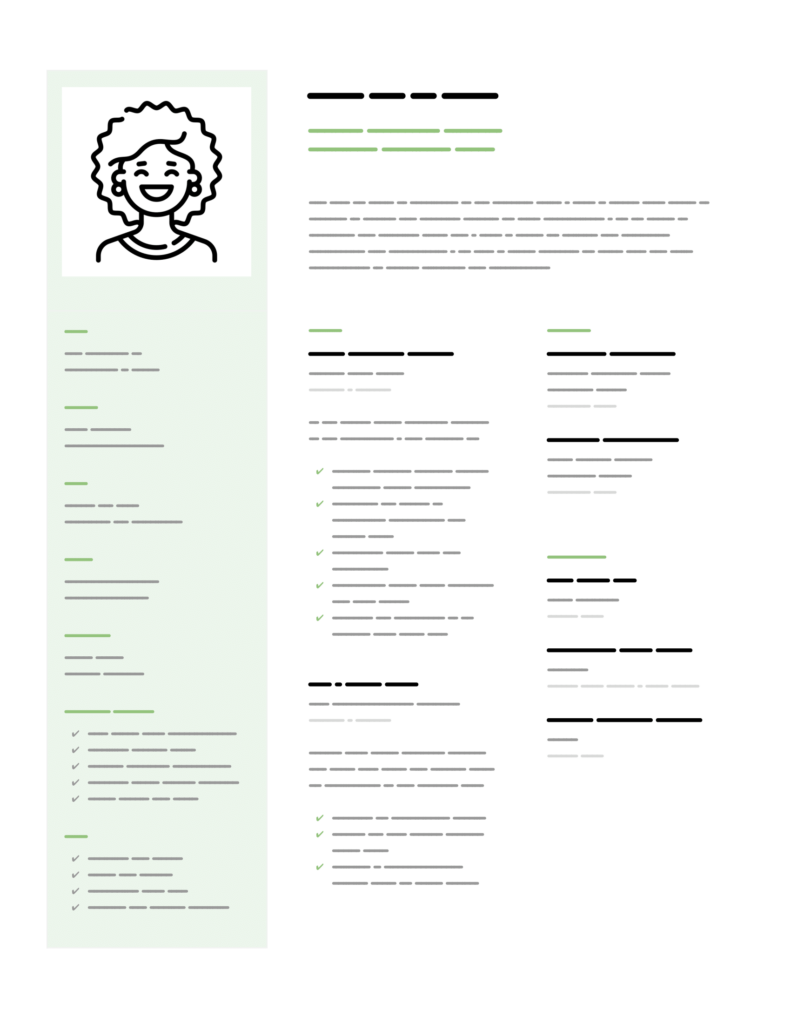Make-or-Break
When you introduce yourself to potential employers, you usually send your resume. It’s a brief overview of who you are and what you bring to the table.
Recruiters sift through piles of resumes each day. Based on a quick scan, only a few candidates get selected to be examined more closely.
So, it’s all about making a good first impression with that single resume document you created.
A bit unfair, though, isn’t it? Aside from the contents of your resume, your document styling skills can make-or-break your chances of getting invited. Even when a designer’s eye is not required for the actual job.
No worries! We’re going to build a strong resume together. One that stands out from the rest and gets you those interviews.
What to Include on Your Resume
What looks great on my resume may look awkward on yours. Rightfully so. Because your resume should reflect your unique personality and address the specific job you’re applying for.
So, use this guide as a basic template. And then, give it your own spin.
First order of business: making a list of what the recruiter should know about you. Don’t mind styling at this point.
On my resume, I include these 5 sections:
- Header
- Full name
- Expertise in a few words
- Pitch about goals and skills
- Career
- Job title
- Employer
- Location
- Start and end date
- Description of the company
- Responsibilities and results
- Education
- Field of study
- School
- Location
- Degree
- Graduation date
- Certifications
- Type of training
- Training provider
- Location
- Issuance date
- Additional information
- Profile picture
- Contact information
- Date and place of birth
- Website and LinkedIn
- Languages
- Recurring feedback
- Favorite pastimes
Feel free to add other sections, such as technical skills, publications, awards, memberships, and references.
Also, decide whether to withhold info that may trigger biases in the selection process, like your age and home address. Be prepared, though, to reveal more of yourself at later stages, when you meet in-person for an interview or finalize a contract.
Designing Your Resume
After figuring out what to share on your resume, we need to fit everything on a single printable page.
Yes, a single page!
Your ability to filter out what matters most and to present your profile on 1 easy-to-scan page will impress most recruiters. Such eye candy encourages them to pause and take a closer look.
So, what goes where on your resume?
Honestly, there’s no cookie-cutter template. More important than the position of resume sections is how elements stand out and blend together.

Styling your resume, keep these design principles in mind:
- Balance: evenly space all elements to please the eye
As shown above, the contents of the resume seems to conveniently fit a single page. That’s no coincidence. All the information you see has been selected with care, written with precision, and purposefully positioned within either the horizontal header or a vertical column. - Contrast: vary shades and shapes for visual interest
The green column separates the additional information from the rest. And it makes the photo pop a little more. Additionally, green section headers and the use of checkmarks give the document more character and depth. - Emphasis: highlight some elements to add hierarchy
Larger font sizes, bold titles, and darker shades draw attention, making the document easy-to-scan and offering anchors for further reading. - Harmony: ensure all elements work together as a whole
In my example, there are no out-of-place elements. Each section header looks the same, line height is similar throughout, and the width of the 3 columns is identical, to name a few. - Proportion: scale elements so they look good together
Again, no coincidences here: the size of the photo matches the height of the header precisely, and the width of the green column matches the length of the longest line of text. - Repetition: use recurring patterns to add rhythm
Each section repeats the same visual format. Like, on the right, information is consistently presented with section headers, titles, subtitles, and dates. Also, bullet points should roll off the tongue, by always starting with a verb, for example. - Movement: guide the reader’s eyes with lines or arrows
My example shows that you don’t have to draw literal lines or arrows. Guiding lines and reading order can also emerge naturally through some of the other design principles, such as alignment. - Alignment: level elements with precision so they look organized
Each column starts at the same height, the photo centers perfectly inside the green column, and the indentation of bullet points matches up. You can almost see invisible lines connecting every detail. - White space: use generous margins to leave breathing room
You may argue that the empty top and bottom right corners of the resume are missed opportunities to share more information. It’s intentional, though, to project a sense of calm and control. Generous spacing also helps the reader to distinguish different sections. - Typography: pick a clear font for easy scanning
Some say that sans-serif fonts are easier to scan. You be the judge.
If you need more space, despite all efforts, I would still urge you to limit your resume to a single page. Maybe adding attachments could help. For instance, mention a successful project on your resume, and refer to an attached PDF file for further details.
Making Your Resume Stand Out
Being mindful of the design principles should already lead you to an outstanding resume. However, to help you win over those recruiters, I’d like to underscore a few things.
- Be original
Even if you’re not good at designing stuff, at least make an effort to create something unique. Don’t settle for copy-pasting someone else’s resume. (You can look around for inspiration, of course.) - Say more with less
You probably have a lot to boast about: successful projects, skyrocketing performance, and undeniable leadership skills. Great! Now, go tell that story with only 25% of the words. It will improve the quality of your resume. - Mull over every detail
I must’ve gone through 10 versions of my resume before I was fairly satisfied. Create, sleep, delete, repeat. Don’t give up too quickly. - Ask people to proofread
Eventually, have others take a look at your resume. Urge them to offer you honest feedback. Would they invite you for a job interview?
Wrap Up
Creating a standout resume is important in a competitive job market. We’ve covered that it’s not just about your qualifications, but also presentation. So, grab your current resume or start a new one, and experiment with the design principles. Remember not to strive for perfection on your first try. Small improvements are okay. Good luck securing those interviews!
